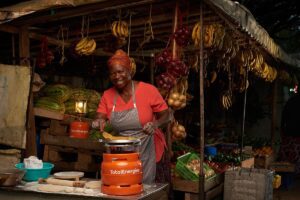The adoption of verifiable technical criteria to define sustainable economic activities is crucial to reorienting financial flows in the fight against the climate crisis
The new study by the Climate Policy Initiative/PUC-Rio (CPI/PUC-Rio) presents ten recommendations for the structuring and implementation of the Brazilian Sustainable Taxonomy, the first national classification system for investments in sustainable activities. The Ministry of Finance plans to release the first version of the Taxonomy in November this year and its mandatory use from January 2026.
“The construction of a single, harmonized classification system applicable to the entire Brazilian economy is a necessary, urgent and crucial effort to promote the transition to an economic model more aligned with environmental sustainability. The creation of the Taxonomy contributes to attracting financial flows to activities capable of generating a positive impact on the environmental, climate and socioeconomic dimensions, potentially reducing financing for harmful activities.”, explains Wagner Oliveira, senior analyst at CPI/PUC-Rio.The taxonomy is a tool of the Ecological Transformation Plan, coordinated by the Ministry of Finance, which aims to align the country’s economic development with environmental protection and reduction of inequalities. According to the Ministry of Finance, the development of the taxonomy aims to respond to Brazil’s main environmental and social challenges, meeting environmental, climate, economic and social objectives.
To define sustainability criteria for each sector, the Taxonomy Action Plan provides for the creation of sectoral technical groups. The development of these criteria will take place throughout this year, with one of the priority sectors being land use, which includes agricultural, livestock and forestry production. In addition to being one of the most important drivers of the Brazilian economy, the sector is responsible for three quarters of the country’s Greenhouse Gas (GHG) emissions. The CPI/PUC-Rio study highlights the importance of defining technical criteria for sustainability of the land use sector, which are capable of verification and monitoring at scale.
Change the World - Subscribe Now
“There is no point in establishing criteria that are not verifiable on the scale and frequency necessary to assess whether the producer at the end adopts, over time, practices in line with the Taxonomy. Verification and monitoring procedures need to be cost-effective, which is why we recommend establishing ways of applying the Taxonomy criteria that reduce the need for visits to production units, including the use of remote sensing tools,” says Oliveira.
The study also establishes priorities and identifies points of attention for the structuring and subsequent implementation of the Taxonomy. For researchers, compliance with regulations should be seen as the first step in defining activities and projects eligible for the Taxonomy criteria.
“In the case of land use activities, there is a good starting point: the social, environmental and climatic impediments foreseen for rural credit based on CMN Resolution No. 5081/2023. In addition to establishing the standards, the resolution also indicates the databases that can be used to check and monitor compliance,” explains Oliveira.
For the success of the Taxonomy, researchers consider it crucial to coordinate efforts and clearly define the obligations and responsibilities of each actor in the market, from financial institutions and capital market structurers to regulators (such as the Central Bank and the Securities and Exchange Commission). Furniture), self-regulators and public policy makers.
They also recommend that the implementation of the Taxonomy occurs gradually. “Covering the economy or an entire sector is a very ambitious task. We suggest establishing a roadmap, which foresees stages with different levels of requirement and dates for the implementation of each stage. One could think, for example, of implementing it on a pilot basis in the banking sector, following the example of Colombia.”, says Gabriela Coser, analyst at CPI/PUC-Rio.
Coser also highlights that the taxonomy is dynamic in nature, which makes it necessary to review and expand the criteria over the years.
Researchers analyzed the main national initiatives to define sustainability in the land use sector, as well as international taxonomies used as a reference for the preparation of the Brazilian Taxonomy Action Plan. The analysis presents the sustainability dimensions of the initiatives, the implementation stage, the objectives, the responsible actor, the users, the applications, the type of adherence, among other relevant aspects.
“We identified consensus and divergences in the initiatives analyzed. Compared to other taxonomies, the objectives of the Brazilian Taxonomy are more ambitious both in terms of quantity and the wording itself, often broader, as is the case with the objectives related to generating decent work and increasing income and reducing inequalities. socioeconomic and regional aspects.”, says Coser.
A point of attention is the exact definition of the sustainable practices considered for the development of sustainability criteria. The researchers analyzed the alignment of sustainability objectives of initiatives applicable to rural credit and observed a significant variation of 1% to 44% in the volume of credit granted in the 2022/23 agricultural year, depending on the sustainability classification adopted. The analysis highlights how the adoption of different criteria impacts which financing flows can be considered sustainable.
“The establishment of the Brazilian Sustainable Taxonomy is fundamental to direct public policy and financial flows. Brazil has a unique opportunity to take on environmental and climate leadership, with the presidency of the G20 and COP30.”, concludes Coser.










